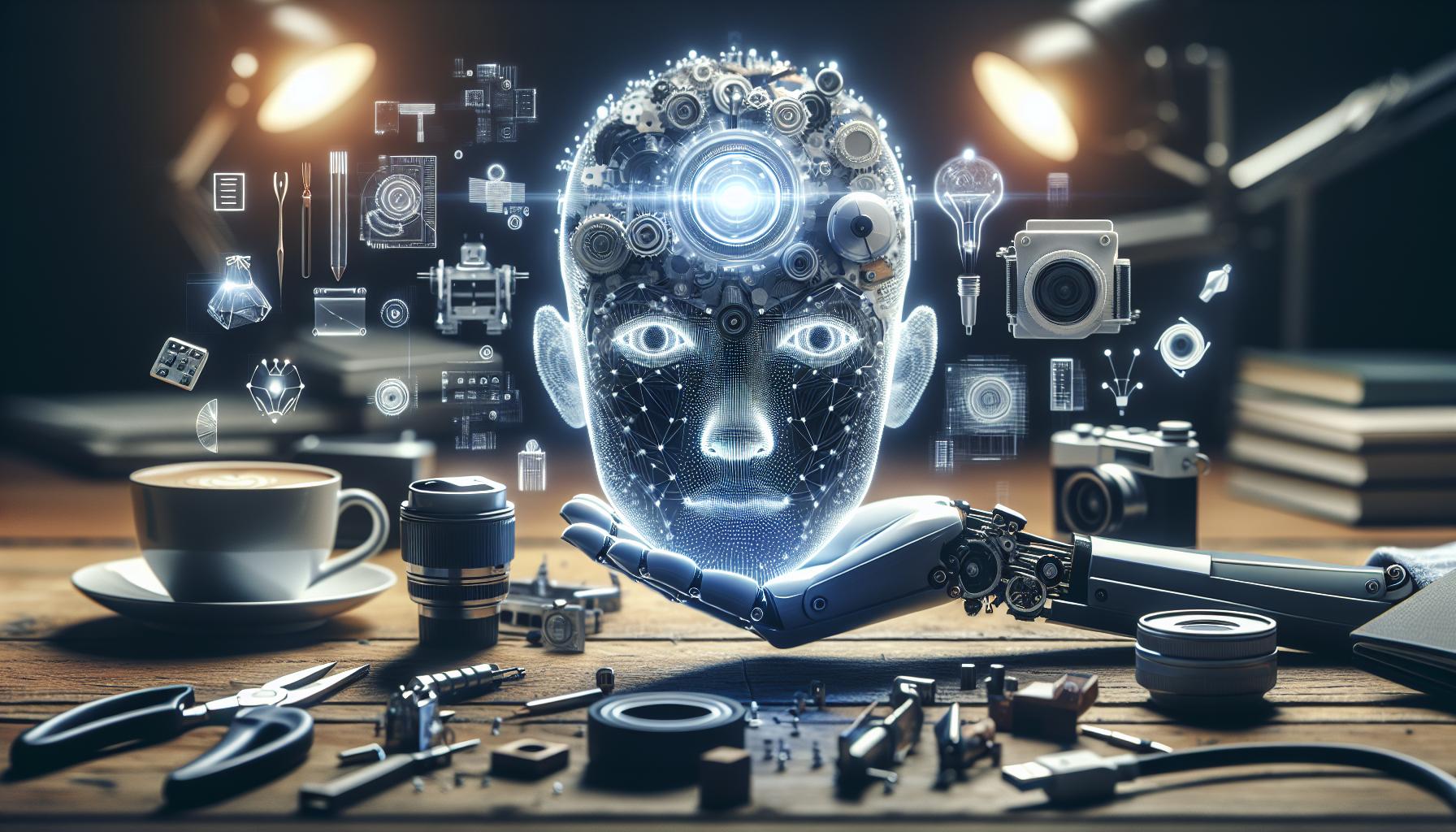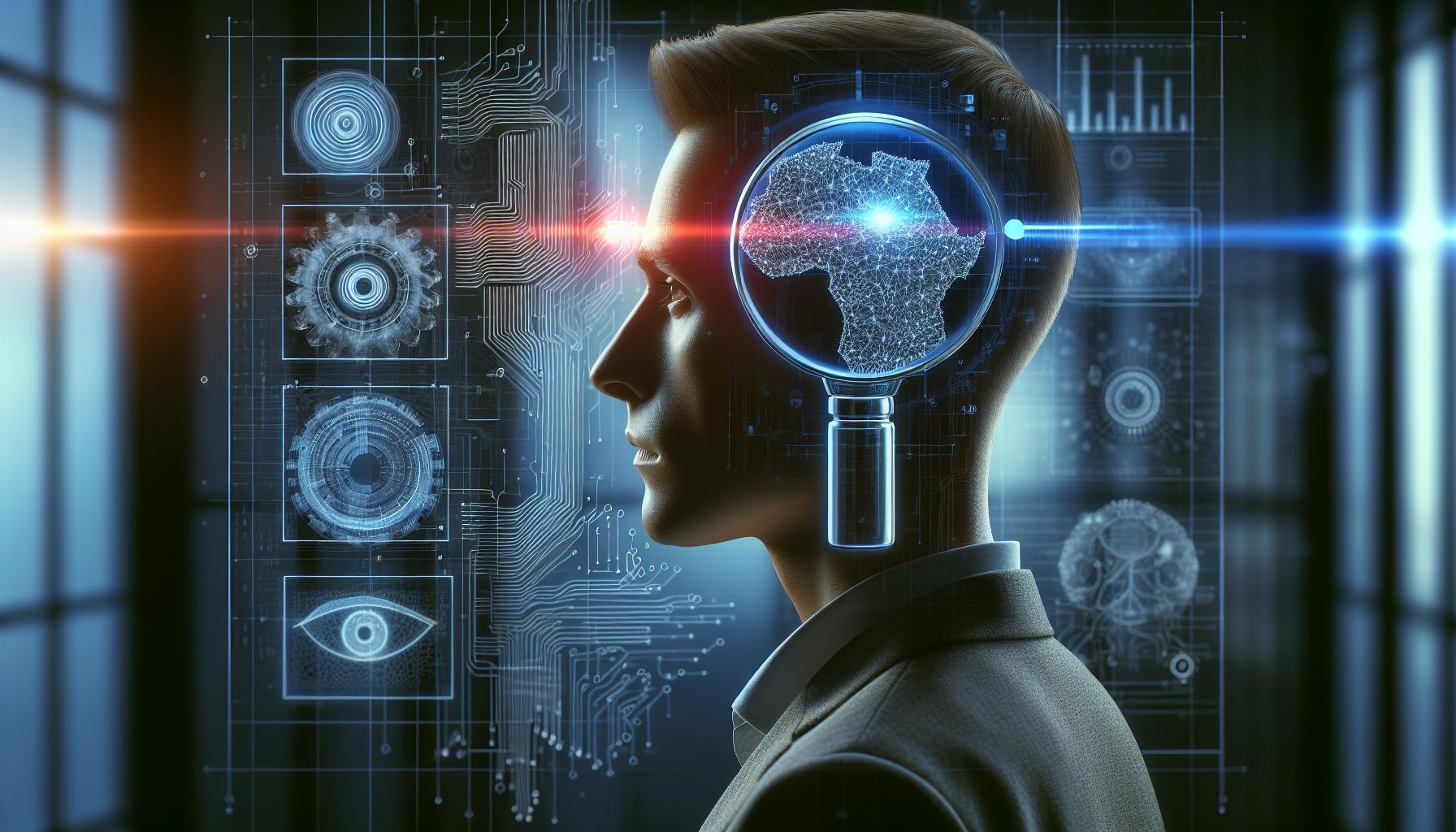As the use of AI-generated text becomes increasingly common in educational settings, educators are left questioning whether platforms like Google Classroom can detect AI contributions from tools like ChatGPT. Understanding this capability is vital, as it impacts academic integrity and the evaluation of student work in a digital age where originality is paramount.
Understanding Google Classroom’s AI Detection Capabilities
The rise of artificial intelligence has drastically transformed educational landscapes, pushing platforms like Google Classroom too adapt in unprecedented ways. As students increasingly utilize AI tools such as ChatGPT for homework and assignments,the challenge of ensuring academic integrity has never been more critical. Educators and institutions are now asking: Can Google Classroom effectively identify AI-generated text?
Capabilities of Google Classroom’s AI Detection
Google Classroom employs several techniques to identify text generated by AI. Primarily,these methods involve advanced algorithms that analyze the writing style,coherence,and structure of submitted assignments. Here’s how it works:
- Pattern Recognition: The system examines common patterns associated with AI-generated text, such as overly formal language or generic phrasing.
- Plagiarism Detection: Integrated tools can cross-reference submissions against a vast database, looking for similarities that suggest reliance on AI outputs.
- Machine Learning Algorithms: By employing machine learning, Google Classroom can continuously refine it’s detection methods based on new types of AI-generated content.
Practical Implications for Educators
understanding how Google Classroom identifies AI text from ChatGPT can empower educators to design more effective assessments. As an example, educators might consider incorporating reflective components in assignments, where students explain their thoght processes or the sources they used for information.This not only discourages reliance on AI tools but also fosters critical thinking skills.
Additionally, utilizing projects where collaboration is key can mitigate the risks of AI misuse. Hands-on group work requires students to engage more deeply with material, making it harder to substitute genuine effort with AI-generated outputs.
Conclusion
As educational institutions navigate the complexities of AI in learning environments, understanding the capabilities of Google Classroom’s detection mechanisms is vital. By leveraging the platform’s strengths, teachers can create a more authentic and accountable academic experience for students.
How ChatGPT Generates Text: The Technology Behind the Scenes
the Technology That Powers ChatGPT
Imagine a sophisticated system capable of understanding and creating human-like text at the speed of light. This is precisely what powers ChatGPT. based on the advanced generative Pre-trained Transformer (GPT) architecture, it processes vast datasets to generate coherent and contextually relevant responses. The underlying mechanism relies heavily on deep learning, drawing distinctions between contexts while mimicking human conversational patterns.
At its core, ChatGPT utilizes transformer networks, which enable it to digest and analyze text in an unprecedented manner. The model is pre-trained on diverse internet text but is fine-tuned to ensure it can generate meaningful responses across various topics. Here’s a brief overview of how this unfathomable technology operates:
- Pre-training: The model learns from billions of words, picking up patterns, grammar, and context.
- Fine-tuning: After pre-training, it undergoes a supervised process where human trainers provide feedback on outputs, refining its ability to align with human expectations.
- Response generation: When prompted, ChatGPT analyzes the input and predicts the next word in a sequence, continuing until it completes a coherent response.
identifying AI-generated Text in Academic Settings
As educators increasingly integrate technology into learning,questions arise about tools like Google Classroom and their capacity to differentiate between human-written and AI-generated text. While ChatGPT’s output can often blend seamlessly with typical student submissions, Google classroom can leverage plagiarism detection algorithms to alert educators to potential AI influence. Understanding the nuances of these AI capabilities has led to upcoming solutions and detection methods focusing on linguistic features typical of AI-generated text.
As a notable example, identifying a lack of personal touch, generic phrases, or unusual syntax can signal the presence of AI-generated content. Learning institutions might consider developing specific training modules for students that emphasize originality, critical thinking, and personal expression in writing, helping foster a more authentic academic environment.
Given the rapid evolution of AI and its implications for educational integrity, exploring tools and methods to discern AI-generated text becomes crucial.Embracing a culture of honest academic practice while leveraging the benefits of AI can foster both innovation and ethics in learning environments.
The Challenges of Identifying AI-Generated Content in Education
Understanding the Complexity of AI Content detection in Education
In the rapidly evolving digital landscape of education,distinguishing between human and AI-generated content poses meaningful challenges. As AI writing tools, like ChatGPT, become increasingly sophisticated, they produce text that is remarkably coherent and contextually relevant.This advancement creates a pressing question around academic integrity: Can Google Classroom Identify AI Text from ChatGPT?. educators are concerned about the potential misuse of these technologies, which can result in unethical practices that undermine the learning process.
One of the primary difficulties in identifying AI-generated content is the lag in technology advancement compared to AI advancement. Customary plagiarism detection tools primarily focus on recognizing copied texts from existing sources, which does not apply to original text generated by AI. Furthermore, AI language models are designed to mimic human writing styles, making it challenging for even the most sophisticated algorithms to discern subtle differences. This highlights the need for a multi-faceted approach to detection, which might involve enhanced AI tools capable of analyzing writing patterns and linguistic cues.
- Variability: AI models can produce a wide range of outputs based on the same prompt, leading to inconsistencies that are difficult to pin down.
- Contextual Understanding: AI lacks deep understanding; it generates responses based on patterns rather than comprehension, which can make detection complex.
- Dynamic Algorithms: continuous updates and improvements in AI tools can outpace detection capabilities, necessitating constant adaptation from educators.
| Key Challenge | Description |
|---|---|
| Style Variability | AI-generated text can vary widely in tone and structure depending on the prompt, making consistent detection difficult. |
| Lack of Plagiarism | Unlike traditional work, AI outputs are not copied from other texts, complicating identification through traditional means. |
| Tool Limitations | Current detection tools may not incorporate the latest AI writing technologies, reducing their efficacy. |
As educational institutions grapple with these intricacies, it is indeed vital to embrace an adaptive mindset. Teachers can enhance their understanding of AI-generated content by integrating complete training on how to spot tell-tale signs of AI writing. This could include focusing on students’ writing progression and encouraging personal expression in assignments. Ultimately,the solution may lie not in rigid detection methods but in fostering ethical usage of AI technologies through transparency and awareness among students.
Can Google Classroom Differentiate Between Human and AI Writing?
The Challenge of Differentiating Human and AI writing
As artificial intelligence continues to evolve, so too does its ability to generate text that closely resembles human writing. This capability raises a pivotal question: can platforms like Google Classroom effectively differentiate between submissions generated by students and those produced by AI tools such as ChatGPT? The growing sophistication of AI writing models often leads to essays and responses that lack telltale signs, challenging algorithms and educators alike.
One method by which Google Classroom may attempt to identify AI-generated content revolves around analyzing writing patterns and styles. Human writers often display varied sentence structures, emotional nuances, and levels of complexity that can be inconsistent across different assignments. In contrast, AI-generated texts, while coherent, could exhibit repetitiveness and a lack of depth or personal experience.Here are some distinctive features frequently enough analyzed:
- Consistency in Tone: Human writers often convey unique voices and diverse tones, whereas AI may lack this personal touch.
- Complexity and Errors: A human might occasionally use informal language or make spelling mistakes, while AI text typically maintains a higher level of grammatical correctness.
- Depth of Insight: Students may include personal anecdotes or perspectives, which can be a challenge for AI to replicate authentically.
Technological Solutions on the Horizon
While no system is foolproof, Google Classroom could leverage advanced machine learning techniques to enhance its ability to discern between human and AI writing. By integrating tools designed to analyze syntax, semantics, and even the emotional tone of a piece, Google Classroom can potentially flag submissions that resemble patterns commonly associated with AI-generated texts. Moreover, educators can supplement these tools with their insights, focusing on specific assignments where personalized input is crucial.The landscape of AI writing is continuously changing, and educators must remain vigilant. For instance, teachers can conduct workshops to educate students about the importance of original thought and unique expression in their writing. Encouraging students to include their personal experiences or reflections in essays can serve as a safeguard against AI reliance, fostering authenticity that is easily recognizable compared to AI-generated text.
while Google Classroom may strive to differentiate between human and AI writing, the complexity of writing styles and the nuanced capabilities of AI present ongoing challenges. By fostering an educational environment that values personal expression and critical thinking, educators can help students develop skills that are inherently human, thereby creating a natural resistance to AI-generated text.
The Role of natural Language Processing in AI Detection
The Continued Evolution of AI in Authenticity Detection
In an era where content generation through AI tools like ChatGPT is becoming increasingly common, educational institutions are exploring innovative methods to maintain academic integrity. Natural Language Processing (NLP) plays a critical role in this context, offering sophisticated techniques to analyze and detect AI-generated text. By leveraging NLP algorithms, platforms such as Google Classroom can potentially identify patterns and linguistic features unique to AI-generated content, which differ substantially from human writing styles.
How NLP Works in Text Analysis
NLP involves various methodologies that enable machines to understand, interpret, and manipulate human language. In the context of detecting AI-generated text, the technology analyzes crucial elements, including:
- Syntax: Examining the structure of sentences to identify unusual grammatical patterns that AI may produce.
- Semantics: Understanding the meaning behind words and phrases, thus detecting inconsistencies or lack of depth that may indicate AI origin.
- Contextual Awareness: Utilizing pre-trained models that can assess whether a text aligns with the expected knowledge and reasoning of a human author.
By employing these techniques, educational tools can increase their efficacy in discerning between original student submissions and AI-generated content, raising the bar for academic honesty.
Implementing NLP for Enhanced Detection
For educators and administrators, the integration of NLP can take several actionable forms. Here are some steps to implement NLP-driven solutions:
- Develop or utilize ready-made detection tools that leverage NLP to evaluate student submissions.
- Train staff on understanding how NLP can interpret writing styles and flag anomalies.
- Conduct pilot programs within classes to gauge effectiveness and improve detection algorithms based on student feedback.
These practical steps not only enhance the capabilities of platforms like Google Classroom in discerning AI-generated work but also empower teachers to foster a more authentic learning environment.
| Detection Method | Description |
|---|---|
| NLP Syntax Analysis | Identifies unusual grammatical structures common in AI text. |
| Semantic Detection | Analyzes word meanings and context to locate inconsistencies. |
| Textual Cohesion | Assesses the logical flow and coherence in writing. |
Conclusion
The question of whether platforms like Google Classroom can effectively identify AI-generated text from tools like ChatGPT is increasingly relevant. Through the application of NLP technologies, there is significant potential to achieve a more clear assessment process, helping to safeguard educational integrity while embracing the advancements that AI offers. The collaborative effort of technology and education can lead to a more robust framework for evaluating student work in an age where AI continues to evolve.
Ethical Considerations: The Impact of AI on Academic Integrity
The Ethical Implications of AI on Academic Integrity
As artificial intelligence technologies like ChatGPT become integrated into educational settings, the challenge of maintaining academic integrity intensifies. With tools capable of generating high-quality text quickly,students may be tempted to misuse these technologies for completing assignments or exams. This raises critical concerns about authenticity and fairness in academic assessments, prompting the question: Can Google Classroom identify AI text from ChatGPT? Understanding the implications of such technologies can help educators mitigate risks associated with AI misuse.
One major ethical consideration is the potential for AI to exacerbate inequalities among students. Those who are more familiar with AI tools may gain an unfair advantage, while others who adhere closely to traditional methods could be left behind. To combat this,educators can implement guidelines prioritizing transparency in how AI is used in their coursework. Such as, instructors might require students to disclose the use of AI in their projects, creating an environment where honesty is valued. This not only promotes accountability but also encourages a more profound understanding of the material:
- Require documentation of AI usage in assignments.
- Encourage collaborative projects where AI tools are discussed and evaluated.
- Offer workshops on the ethical use of AI in education.
Moreover, the reliance on AI for automated grading poses additional questions about fairness and bias. If platforms like Google classroom deploy AI detection tools, there shoudl be clear criteria on how these tools evaluate submissions. Misidentifying authentic student work as AI-generated could unfairly penalize some students, leading to a loss of trust in educational assessments. Thus, defining operational procedures and ensuring transparency in the evaluation process must be prioritized.
Creating a Framework for Ethical AI Use
To navigate these challenges effectively, educational institutions can develop a comprehensive framework that addresses ethical AI use in academic settings. This framework could include:
| Key Components | Description |
|---|---|
| Guidelines for AI Usage | Establish clear policies on acceptable AI use in academic work. |
| Training for Educators | Equip instructors with tools to recognize and address AI-related challenges. |
| Student Workshops | Educate students on the ethical implications of using AI in their studies. |
| Continuous Assessment | Regularly review and adjust policies to evolve with AI technologies. |
By establishing these ethical foundations, educators can help ensure that the integration of AI into the academic sphere promotes integrity rather than undermining it. Addressing questions like Can Google Classroom identify AI text from ChatGPT? demands actionable insights that prioritize ethics while embracing innovation.
Training Teachers to Recognize AI-Assisted Learning Techniques
The Need for teacher Training in AI Recognition
As the integration of artificial intelligence in education continues to rise, teachers are finding themselves at the forefront of a transformation that presents both opportunities and challenges. With tools like ChatGPT capable of generating coherent texts, the ability to discern AI-assisted content from student submissions becomes crucial. Not only does this ensure academic integrity, but it also allows educators to tailor their approaches to support students effectively. training teachers to recognize AI-generated materials is paramount in this evolving landscape.
Understanding AI-Assisted Learning techniques
Teachers must familiarize themselves with various AI-assisted learning techniques and develop sharp observation skills to identify their use in student work. Recognizing specific characteristics can significantly enhance their effectiveness in evaluating submissions. Here are some key points to consider:
- Content Structure: AI-generated texts may exhibit a uniform structure or repetitive phrases. Teachers can look for atypical flows that students don’t usually demonstrate in their writing style.
- Vocabulary Richness: While students may show growth in vocabulary over time, AI-generated content can often include an unnatural variety of sophisticated terms not typically seen in a student’s previous work.
- Depth of Insight: AI tends to provide generalized responses. If a submission lacks personal insights or contextual understandings that reflect the student’s unique viewpoint, it may be AI-assisted.
Practical Steps for Educators
To effectively train teachers in recognizing these techniques and fostering a more robust educational environment,school districts should consider implementing structured training programs.These programs can include:
- Workshops and Seminars: Conduct regular training sessions where educators can learn about new AI tools, their capabilities, and how they can influence student submissions.
- Collaborative Assessment: Encourage teachers to work in groups to examine student work for signs of AI assistance, promoting a shared understanding and a diversity of insights.
- Resources and Guidelines: Provide materials that summarize AI writing characteristics along with examples.this can include checklists and rubrics developed to help teachers distinguish between AI-generated and original student work.
Monitoring and Support Beyond Training
As teachers become more adept at spotting AI-generated content, ongoing support and monitoring will be essential. Here’s how schools can ensure continuous improvement:
| Strategies for Ongoing Support | Description |
|---|---|
| Peer Review Systems | Implement mechanisms where teachers can share experiences and strategies for identifying AI content, creating a collaborative learning environment. |
| Feedback Loops | Gather feedback from teachers about the training program and AI detection methods to continually refine the approach. |
| Technology Integration | Promote the use of technological tools that can assist in identifying AI content, allowing teachers to apply these techniques effectively. |
By investing in the training of teachers to recognize AI-assisted learning techniques, educational institutions can create a robust framework that fosters integrity and growth in students. The question of whether Google Classroom can identify AI text generated by ChatGPT is just the beginning; understanding how to navigate these challenges requires a well-prepared teaching workforce.
Exploring Different AI Detection Tools: A Comparison
Understanding AI Detection Tools and Their Capabilities
In an age where AI-generated content proliferates, discerning authentic work from machine-produced text is paramount. Various AI detection tools have emerged, each promising to identify AI-written content, such as that generated by ChatGPT, with varying degrees of accuracy.As educators and institutions consider tools like Google Classroom, understanding the effectiveness of these detection solutions becomes crucial.
- ZeroGPT: This tool is designed for comprehensive analysis, providing reliable detection for outputs from models such as ChatGPT and GPT-4. Featuring a sophisticated plagiarism check,ZeroGPT generates detailed PDF reports for users,making it a robust choice for educators looking to verify the authenticity of student submissions [[1]].
- quillbot: Renowned for its user-amiable interface, QuillBot’s AI Detector specializes in identifying text generated by popular platforms such as ChatGPT and Claude. The tool’s free access makes it accessible for students and teachers alike, ensuring that AI detection is within reach for those who may not have extensive technical resources [[2]].
- Isgen: Positioned as a leading solution, Isgen primarily focuses on detecting outputs from advanced AI models, including Deepseek and Gemini. Its high accuracy rate is especially useful for institutions that require stringent checks against academic dishonesty, aligning well with platforms like Google Classroom that promote academic integrity [[3]].
Comparative Analysis of Features
To effectively evaluate the best AI detection tool, it is helpful to consider key features such as detection accuracy, user experience, and additional functionalities. Below is a comparative table outlining these crucial aspects:
| Tool | Detection Accuracy | unique Features | Accessibility |
|---|---|---|---|
| ZeroGPT | High | PDF report generation, plagiarism checking | Paid |
| QuillBot | Moderate | Free access, intuitive interface | free |
| Isgen | Very High | Advanced model detection, supports various AIs | Paid |
By understanding the distinct offerings of these AI detection tools, educators can better navigate the complexities of identifying AI-generated text in platforms like Google Classroom. Each tool provides different strengths, making it essential to select one that aligns with specific educational needs and prevents the potential misuse of AI in academic settings.
Future Trends: Will AI Detection Become Standard in Online Learning?
Did you know that by 2025, it’s estimated that over 80% of educational institutions will adopt some form of artificial intelligence to enhance learning? as AI technology in the realm of education matures, the question of whether platforms like Google Classroom can effectively identify AI-generated text from tools like ChatGPT becomes increasingly pertinent. This growing concern highlights the need for robust AI detection mechanisms, which could soon evolve into standard practice in online learning environments.
The Need for AI Detection in education
In an era where students can easily generate essays and homework assignments through AI tools, educational integrity is at stake. The use of services like ChatGPT raises legitimate questions about authorship and originality. Some potential implications of not implementing AI detection systems include:
- Academic dishonesty: Increased potential for plagiarism and lack of authentic learning.
- Misrepresentation of Skills: Students may graduate without genuinely grasping the subject matter.
- Devaluation of Educational Credentials: Employers may question the integrity of degrees from institutions known to overlook this issue.
Both educators and institutions are now exploring advanced AI detection solutions to maintain academic standards and ensure that students engage in true learning experiences.
Current Developments and the Future of AI detection
As institutions grapple with these challenges, they’re likely to investigate the capabilities of systems like Google Classroom in identifying AI-generated text. While the current tools are not foolproof, advancements in machine learning algorithms are paving the way for more sophisticated detection methods. Research indicates that with sufficient training data, AI detection tools can reach a high level of accuracy in distinguishing human-written text from AI-generated content.
| Detection Tool | Accuracy Rate | Features |
|---|---|---|
| OpenAI Text Classifier | Approximately 85% | Identifies AI-generated content; user-friendly interface |
| Turnitin’s AI Detection | High accuracy for academic papers | Integrated into existing plagiarism detection systems |
| GPTZero | Variable based on context | focus on real-time online assessments |
As these technologies evolve, the educational sector will have to prioritize training educators not only to use these tools effectively but also to cultivate an environment that fosters original thought. This could lead to the establishment of guidelines that empower students to utilize AI responsibly while maintaining academic integrity.
the incorporation of AI detection capabilities within educational platforms like Google classroom is not just a possibility—it’s an impending necessity. Schools and universities must prepare to embrace these technologies to create a fair and engaging online learning experience,ensuring that evaluation remains a true reflection of students’ knowledge and abilities.
Concluding Remarks
As we conclude our exploration of whether Google Classroom can identify AI-generated text from ChatGPT, it’s essential to recognize the complexity and evolving nature of AI technologies. While Google Classroom leverages advanced algorithms to enhance educational experiences, the challenge of detecting AI-generated content remains nuanced.
The integration of AI in educational platforms raises crucial considerations about authenticity,academic integrity,and the potential for misuse. As AI continues to develop, so too must our methods for ensuring transparency and trust in its applications.
We encourage you to delve deeper into the discussions around AI tools, their impact on learning environments, and the ethical implications they introduce. Engaging with this topic not only furthers your understanding but also contributes to a broader dialogue about the future of education in an increasingly digital landscape. stay informed, remain curious, and continue to explore the intersection of technology and education.












